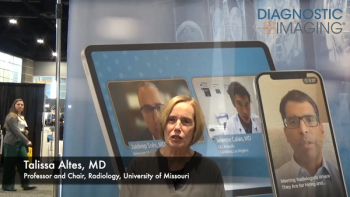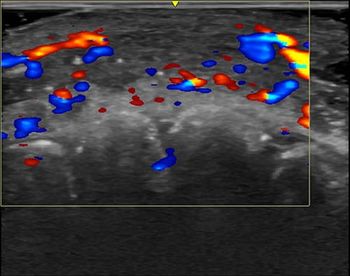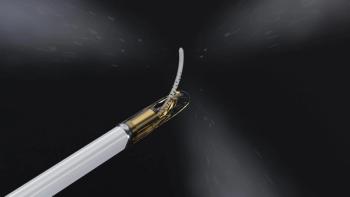
New MRI Technique Identifies Early-Stage BBB Dysfunction with Small Vessel Disease
Diffusion-prepared arterial spin labeling can measure the water exchange rate across the blood-brain barrier, catching malfunctions at an earlier state.
A new MRI technique can measure the levels of water exchange across the blood-brain barrier (BBB), identifying dysfunction that is associated with the development of small vessel disease (SVD).
Cerebral SVD is the most common form of vascular cognitive impairment, and many individuals who have it go on to develop dementia. The BBB is responsible for clearing the brain of toxic substances, and a malfunction is widely considered to be an early marker of SVD.
PET scans and dynamic contrast-enhanced (DCE) MRI can effectively detect damage to the BBB, but these measures also subject patients to radiation and contrast dye. They are also limited because they generally only pick up later-stage BBB dysfunction. Consequently, there is a need for a non-invasive technique that can catch problems earlier, said a team of investigators from the University of Kentucky and the University of Southern California.
Related Content:
In the most recent issue of
“Our results provide evidence for an in vivo association between water exchange rate across the BBB and cerebral spinal fluid (CSF) amyloid-beta42 concentration,” said the team. “These findings suggest that [water exchange rate across the BBB] computed from a novel DP-ASL sequence may be a potential indicator of BBB-related clearance functions.”
To make this determination, the team conducted DP-ASL sequence MRI scans on 39 healthy older adults without any cognitive impairment between the ages 67 and 86. Participants were scanned with 3T scanners, using a 64-channel head coil, and the team used high-resolution, multi-echo, T1-weighted anatomical image and 3D gradient-and-spin echo diffusion-prepared pCASL sequences. In addition, the patients underwent a lumbar CSF draw.
For their assessment, the team concentrated on levels of amyloid-beta in the CSF – levels are low when the protein is not sufficiently cleared from the brain into the CSF. Based on their evaluation, the team determined that low CSF amyloid-beta levels were associated with a low BBB water exchange rate captured by the DP-ASL method.
In addition, they identified significant associations between CSF amyloid-beta42 concentration and water exchange values in the whole brain (beta=0.51, t=3.4, P=0.002, VIF=1.04), frontal lobe (beta=0.50, t-3.4, P=0.02, VIF=1.04), parietal lobe (beta=0.56, t=3.9, P<0.001, VIF=1.03), and precuneus (beta=0.46, t=3.1, P=0.004, VIF=1.02) after controlling for sex and age. Each measurement, they said was associated with low CSF amyloid-beta42 concentration.
“Our results suggest that DP-ASL may provide a non-invasive index of BBB clearance dysfunction prior to any detectable cognitive impairment,” said Brian Gold, Ph.D., a neuroscience professor at the University of Kentucky Sanders-Brown Center on Aging.
Ultimately, the team said, these results add to the growing body of evidence that BBB dysfunction could represent a link between SVD and a clinical diagnosis for Alzheimer’s, and DP-ASL could be used to non-invasively assess BBB water exchange in SVD clinical trials.
For more coverage based on industry expert insights and research, subscribe to the Diagnostic Imaging e-Newsletter
Newsletter
Stay at the forefront of radiology with the Diagnostic Imaging newsletter, delivering the latest news, clinical insights, and imaging advancements for today’s radiologists.




























